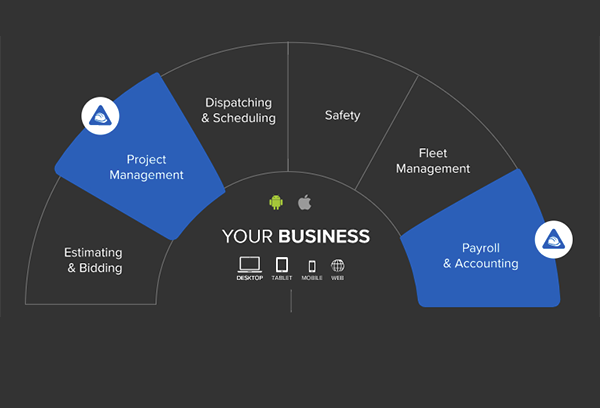Reducing risk, lowering costs, and saving time are all valuable results of eliminating paper on your jobsite, but the true strength of going paperless is the real-time insight into job costs and productivity. Every jobsite document—time cards, plans, forms, safety meetings, inspections, and truck tickets—should be digital, and thus searchable, up-to-date, and provide critical decision-making information instantly.
But even the savings just from reduced entry time and processing can be significant. Companies that eliminate paper can save more than $10,000 a year per foreman from that alone. How do we figure that?
Inputting data from the field with a simple, digital interface saves foremen about 30 minutes per day. Over the course of a year, that’s $5,000 per foreman if we assume a fully burdened foreman hourly rate of $45.
In addition, because data flows automatically into payroll, most companies can repurpose at least one full-time employee in payroll or grow without adding payroll personnel. Let’s assume a payroll clerk, fully burdened at $60,000, can process timecards for 15 crews. One-fifteenth of their time saves another $4,000 annually per foreman.
Providing digital documentation at the source helps eliminate mistakes and time wasted reviewing and verifying unclear handwriting, waiting for paper time cards to be driven into the office, reconciling invoices for materials, and digging into banker boxes of paper to deal with audits. Removing wasted effort easily saves a company another $1,000. This brings the total saved to at least $10,000 per foreman.
Having the right information at your fingertips also allows you to catch errors early and make corrections in real time. If you saved only one crewhour per month by correcting an error early, that’s another $4,000 per foreman each year.

It’s not just time and cost savings; eliminating paper improves safety too. Reducing the person-to-person contact of collaborating and communicating through paper is critical for COVID safety on work sites.
And safety advantages persist outside the current crisis. For example, processing paper truck tickets involves significant interaction and paper handling. Tickets managed digitally through a simple app create fewer illness exposure risks, and also decrease time spent on reconciling invoices, errors, lost documents, and delay in cost data.
There are few, if any, roles in a construction company that aren’t positively affected by going paperless. Foremen save time because of easier, less time-consuming field entry. In turn, they become knowledge workers, equipped with information to make good decisions and plan ahead.
Project managers receive organized data at their fingertips to help them analyze complex problems more quickly and create solutions. As workforce shortages require many PMs to manage multiple projects remotely, being paperless is especially critical to synthesizing information quickly, communicating clearly to all parties, and reducing errors.
Dispatchers, equipment managers, and mechanics are up-to-date on equipment status so the fleet is well-maintained and equipment doesn’t break down or get taken down for maintenance when it’s needed.
Executives can see dashboards of productions, progress, and costs on a daily basis to easily identify problems and opportunities at a high level and make good strategic decisions for the growth of the business.
Ultimately, the companies that continue to spend more time and money building their company on paper are going to be left behind.
Click here to learn more about how HCSS can help you go paperless.


